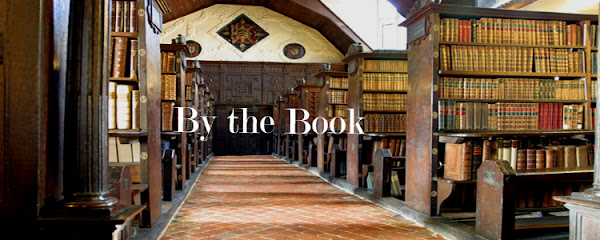I wanted to point out to those of you who caught the PBS special "The Mormons" last week, that you saw our friend Richard Bushman, the author of the Joseph Smith biography Rough Stone Rolling, which was featured in my last book review. Also interviewed (among many other people) was Terry Givens who wrote an interesting book about the Book of Mormon that I enjoyed and hope to review for the blog in the future. Alright, enough intro stuff...on to the review...
Since my last posting, the 2007 Pulitzer Prizes were announced. I’m happy to report that the subject of my Chapter 2 review, The Looming Tower, was awarded the prize for General Nonfiction. Apparently, I wasn’t the only one who enjoyed that fantastic book! Be sure to check out it out if you haven’t yet. In addition, one of the finalists in the History category was “Mayflower: A Story of Courage, Community, and War" by Nathaniel Philbrick. This was another new book that I read last year when it came out, and it was a wonderful book. I decided to review it today.
(As a quick side note, Nathaniel Philbrick, who lives near which tells the tragic story of the whaleship Essex and which won the National Book Award, and Sea of Glory
about the U.S. Exploring Expedition of 1838–1842. I really loved the first of these and will hopefully review it in the future. The second of these books is
 currently sitting on my bookshelf begging to be read. If any of you have read it, I would love to hear from you about what you thought.)
currently sitting on my bookshelf begging to be read. If any of you have read it, I would love to hear from you about what you thought.)
If you are anything like me, you grew up with romantic visions of the pilgrims and Native Americans sitting together at the first thanksgiving. You may have imagined a group of people seated at a large rectangular table out in the warm afternoon autumn sun, with buckle-shoed Pilgrim John asking his Indian neighbor to “Pass the yams, please.” Maybe you pictured the Pilgrims dressing up a large turkey or the Indians bringing in a cornucopia of fruits and vegetables. Perhaps you can imagine the children running off to play in the woods after dinner while the adults gather around to watch the Dallas Cowboys and Detroit Lions play. Okay, maybe you pictured everything except the football game. Football started shortly after the pilgrims…right? Anyway, it turns out, not too surprisingly, that our image of life in Plymouth Colony is a little bit off. In fact, for many of us it is way off. In this great book Nathanial Philbrick describes how the members of
The pilgrims were a group of devout English Christians who were seeking religious freedom. They fled from  food and were quite unprepared for the winter ahead. Over half of the settlers died in the first six months and the others likely would have too, if not for some help from local Indian tribes. While some sort of thanksgiving celebration did occur the following year, it was much different from what we have all imagined throughout our childhood. Philbrick gives a more accurate description of this celebration and other events that transpired early on in Plymouth Colony. What followed was a relatively peaceful, although often difficult and many times stressful, coexistence for the next half century.
food and were quite unprepared for the winter ahead. Over half of the settlers died in the first six months and the others likely would have too, if not for some help from local Indian tribes. While some sort of thanksgiving celebration did occur the following year, it was much different from what we have all imagined throughout our childhood. Philbrick gives a more accurate description of this celebration and other events that transpired early on in Plymouth Colony. What followed was a relatively peaceful, although often difficult and many times stressful, coexistence for the next half century.
In 1675, war erupted. The war was called King Philips War (King Philip was an Indian chief at the center of the conflict) and was the culmination of building tension between the colonists and some of the Indian tribes, as well as the eruption of centuries-old disputes and disagreements between some of the many different Indian tribes. The war was gruesome, lasted over one year, and took several thousand lives, including a large percentage of Plymouth Colony. Philbrick recounts how this war started, brings to life the principal participants and depicts its ultimate conclusion.
This book provides an excellent description of the rough, trying circumstances that the pilgrims endured upon settling in the
However, if you’d like to hold onto your childhood images of the Indians and pilgrims feasting on turkey together and living in continual peace and harmony, you may want to skip this one.






